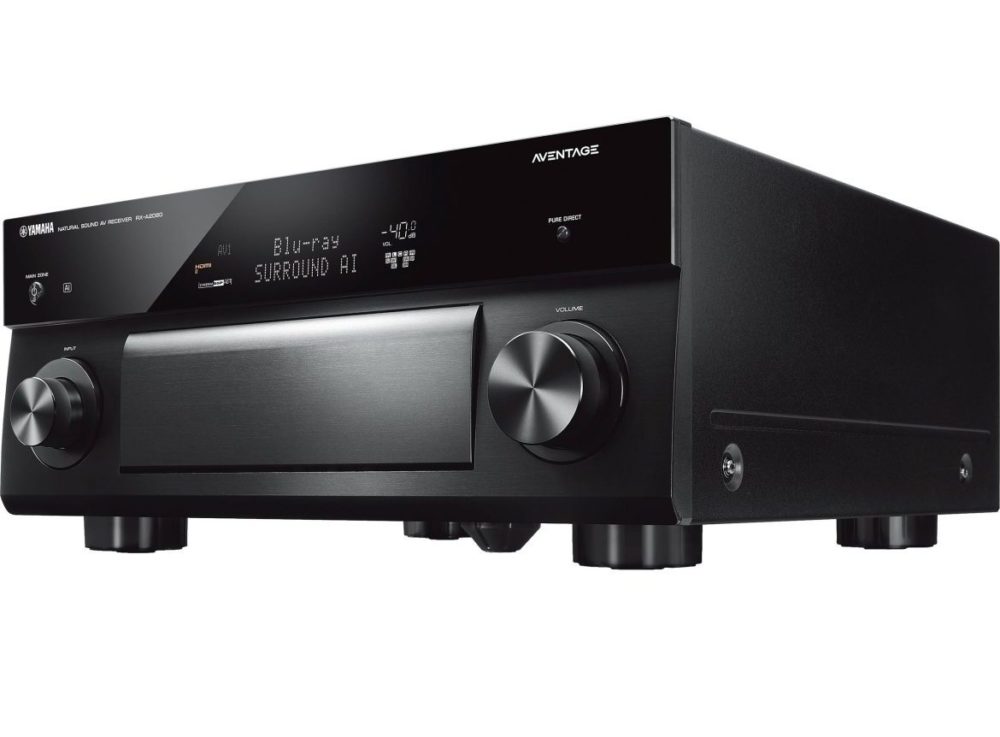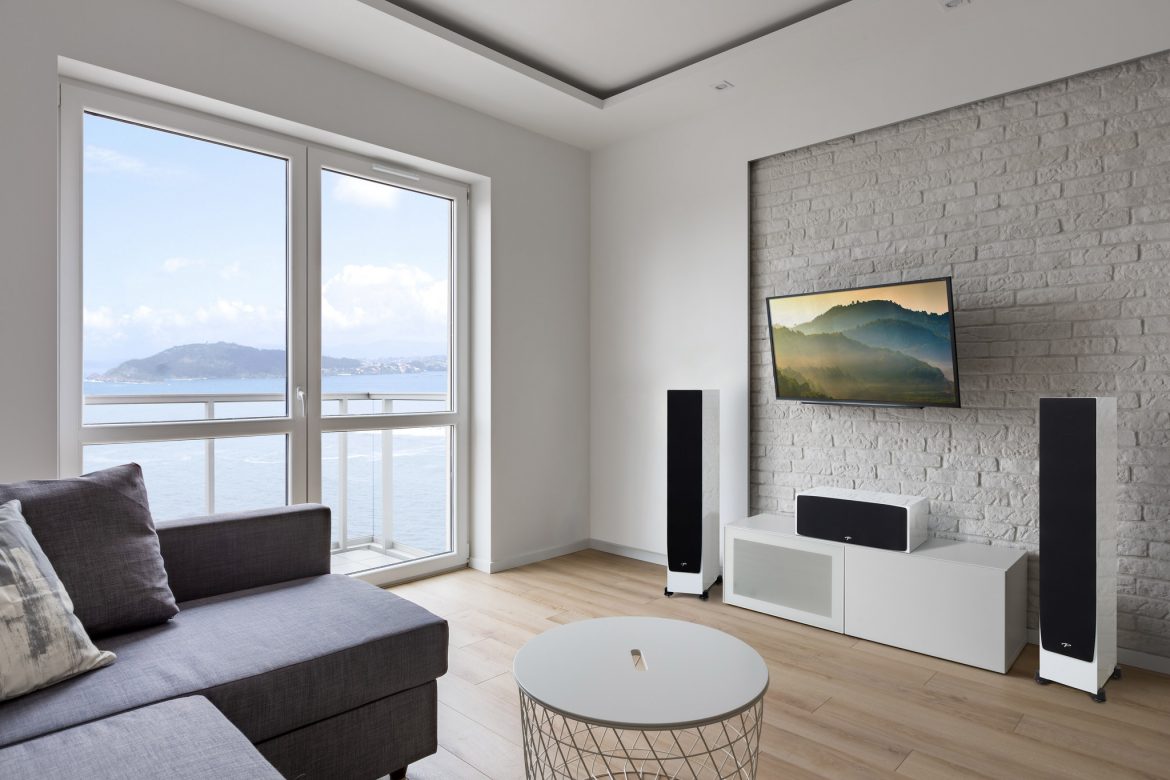TL;DR
Dreaming of an epic home theater without breaking the bank? This review dives into Paradigm's Monitor SE and Atom series, building a stunning 5.1.2 Dolby Atmos system for under 25,000 SEK. Discover how these Canadian-made speakers, often overshadowed by pricier siblings like Martin Logan, deliver exceptional sound quality, stylish finishes, and powerful bass. From the impressive Monitor SE 6000F fronts and clear 2000C center to the compact Atom SE surrounds and smart Defiance V10 subwoofer, this setup offers incredible value and an immersive audio experience that punches well above its weight. Ready to elevate your movie nights and music listening? Read on to see why this Paradigm system might be your perfect match.
Paradigm. Speakers. Does the name sound familiar? If I mention Anthem or Martin Logan, would that pique your interest? Martin Logan’s exceptionally desirable, beautiful, and sonically impressive electrostats, starting at 30,000 SEK and reaching nearly a million, are widely admired. Interestingly, the same Canadian factory that produces Martin Logan and Anthem also manufactures Paradigm. Paradigm is a prominent brand in North America, known for offering many of the qualities of its more renowned counterparts at a more accessible price point.
It’s worth noting that Paradigm’s product range encompasses both entry-level and high-end models. From the Monitor and Atom SE series, which are the focus of this review, to the Persona and Premier lines, some Paradigm speakers, like those from Martin Logan, can cost hundreds of thousands of SEK for just the front speakers. However, evaluating speakers that are beyond the reach of most consumers is of limited practical value. We frequently receive inquiries from our readership (both in person and via email), such as: “What home theater system, with at least a 5.1.2 configuration (for Atmos reproduction), would you recommend for under 25,000 SEK?”
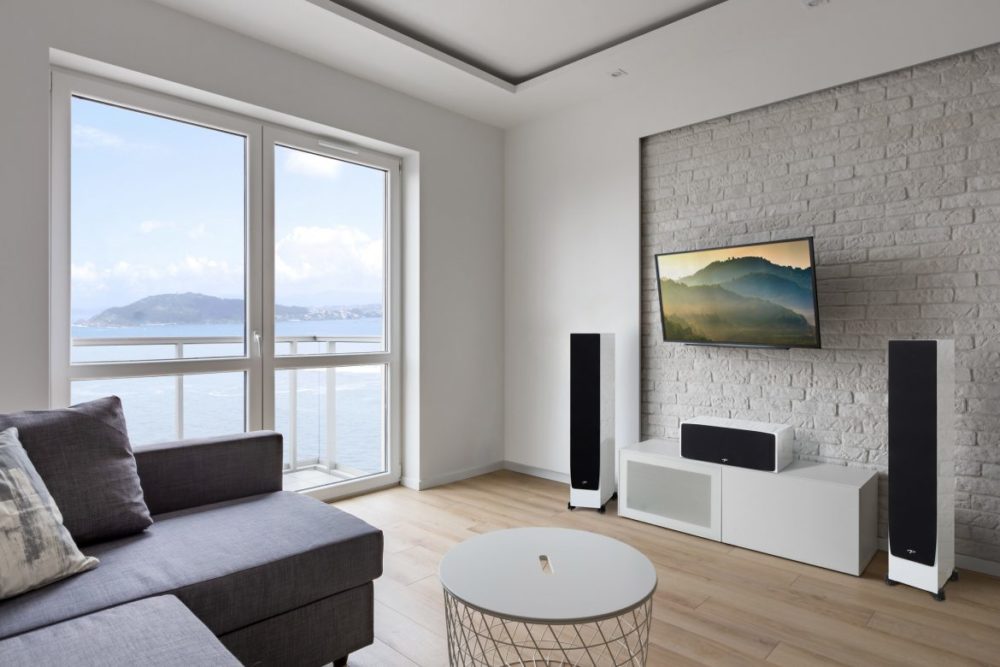
The answer may very well lie within this review.
While Paradigm’s Monitor and Atom series are positioned as entry-level in terms of cost, their performance, build quality, and finish rival that of considerably more expensive competitors. We assembled a 5.1.2 system in white (piano lacquer), a finish we consider exceptionally stylish in a modern living space (as opposed to a dedicated home theater). This aesthetic offers broad appeal, even to those who may not prioritize high-end audio or find typical speaker designs unattractive. If you share this sentiment, continue reading to discover compelling arguments that may change your perspective.
I’m a lumberjack and I’m OK
Paradigm’s design philosophy emphasizes compact, yet powerful bass drivers, engineered to deliver a more robust bass response than competing designs. All Paradigm speakers incorporate an aluminum tweeter designed for smooth, non-fatiguing high-frequency reproduction, largely due to their patented Perforated Phase Alignment (PPA) lens. This fine-meshed net, with its specific geometry, acts as a “phase plug,” filtering out out-of-phase information. This technology is also implemented in Paradigm’s higher-end series.
Upon unboxing the speakers, recently shipped from Canada (via the Swedish distributor Hifi-Agenten), we immediately noticed the concise and straightforward user manuals. They recommend a minimum 30-hour break-in period for the speakers. To ensure optimal performance, we extended this to 100 hours before conducting our critical listening tests. The manual also suggests methods to accelerate the break-in process. While the speakers sounded good out of the box, we observed improvements in smoothness and dynamics after the break-in period. This was achieved not with pink noise, but with diverse playlists encompassing a wide range of music genres and film soundtracks.
Paradigm Monitor SE 6000F – front speakers that are something else
The front speakers are often the most visually prominent and sonically crucial components of a home theater system. They handle a significant portion of the audio information and are responsible for stereo music reproduction. The Paradigm Monitor SE 6000F front speakers are substantial units, weighing 20 kg each, without feeling cumbersome. These 5-driver, 3-way floor-standing speakers impress with their effortless and engaging sound reproduction when playing CD records via our reference Panasonic UB9000. While they benefit from a robust power amplifier, such as our current reference surround amplifier, Yamaha’s Aventage RX-A2080, they also perform adequately with less powerful receivers, like our mid-range Yamaha RX-V781 from last year.
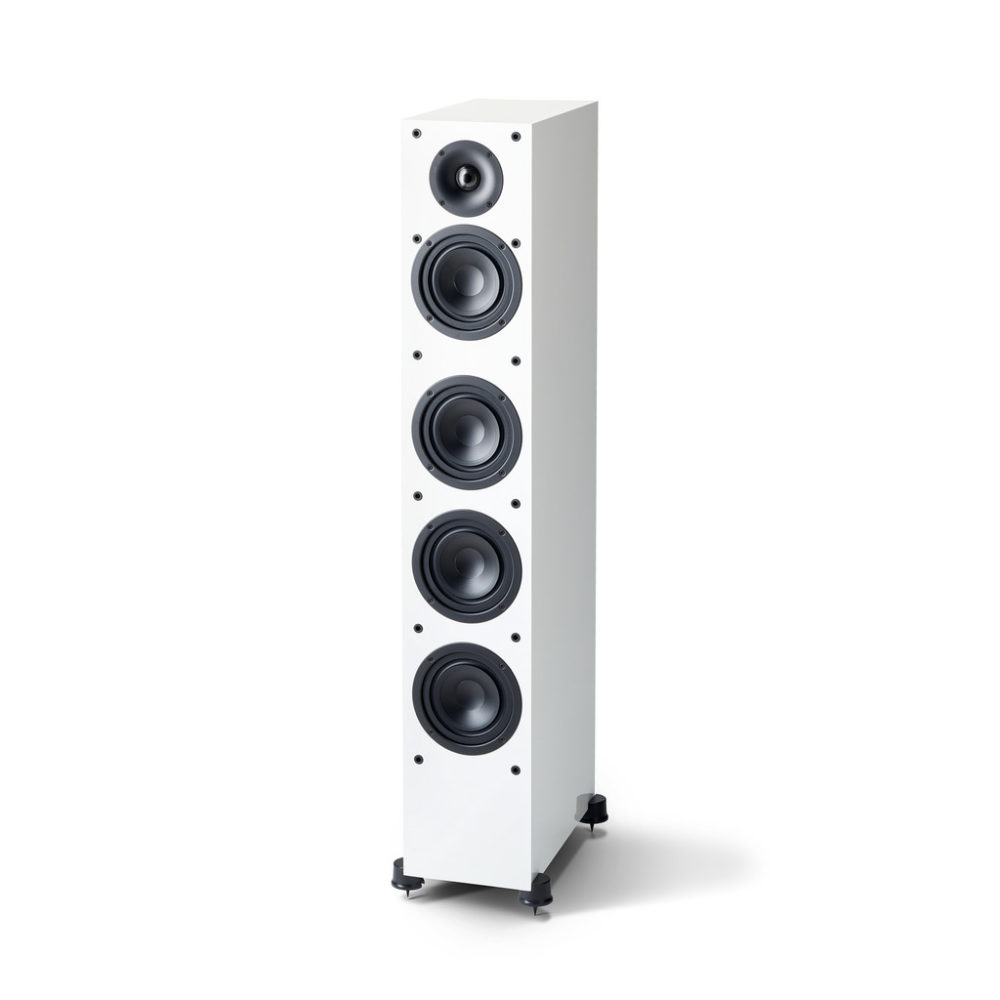
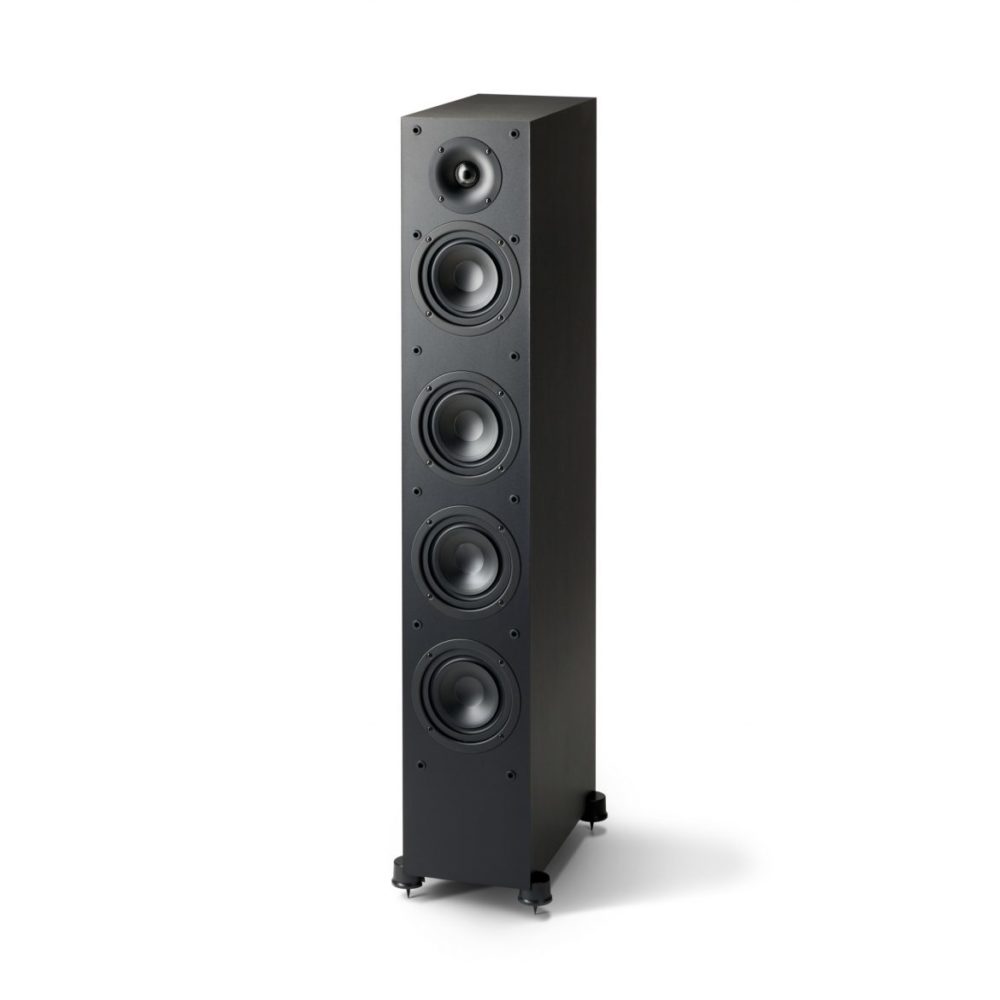
At the time of this review, the Monitor 6000F were priced at approximately 10,000 SEK per pair. Compared to previous references, they may exhibit a slightly less pronounced high-frequency extension and the deepest bass response right out of the box (despite a respectable 43 Hz specification for their price). However, surpassing their performance requires a significantly higher investment, solidifying their position as a compelling option in the 10,000 SEK/pair segment.
The Monitor 6000F delivers a vibrant sound with a soundstage that is both warm and well-defined, without sounding analytical or sterile. The midrange reproduction is particularly noteworthy. Our only minor critique is a slightly restrained presentation; a bit more punch and depth in the bass would be welcome. We anticipate addressing this with the addition of Paradigm’s Defiance V10 subwoofer. But first, we’ll examine another essential element of the home theater experience…
Paradigm Monitor SE 2000C – the center of the cinema experience
The center speaker plays a critical role in a home theater system, as it handles a majority of the dialogue in films and serves as the focal point for the overall soundstage. However, center speakers are often an area of compromise in many setups, frequently undersized and with inadequate specifications, based on the assumption that dialogue requires minimal dynamic range. A good center speaker demonstrates the fallacy of this assumption.
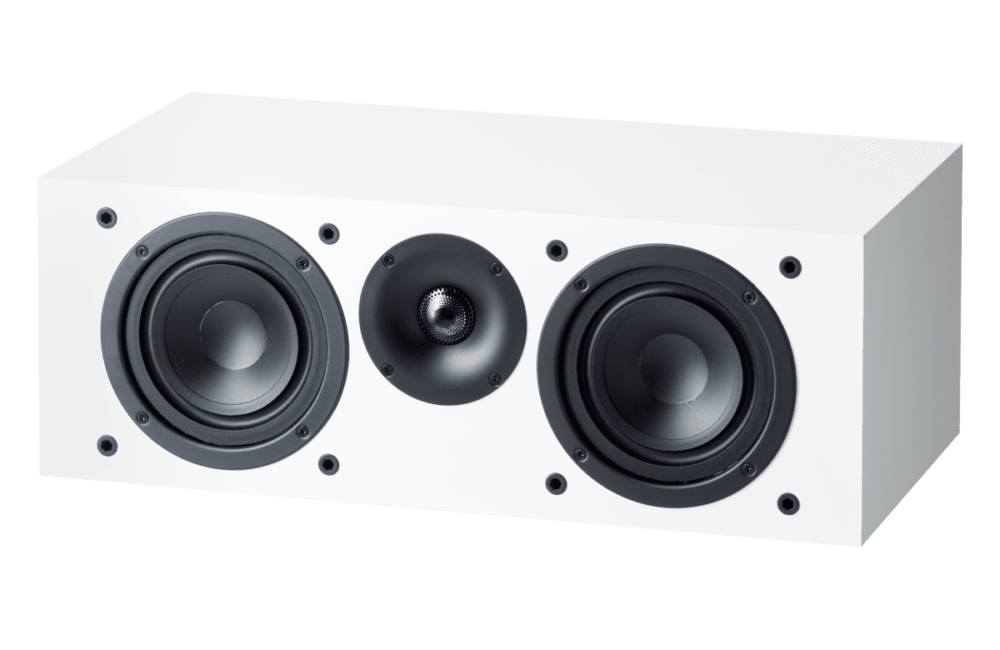
The Paradigm Monitor SE 2000C is an exceptionally good and well-proportioned center speaker for its price (approximately 2,200 SEK at the time of testing). While slightly larger than other center speakers in its class (though not significantly so), it delivers both a smooth timbre and precise sound reproduction. One of our preferred UHD references, Deadpool 2, showcases Ryan Reynolds’ dialogue with sonic clarity and appropriate dramatic impact. We were genuinely impressed by the superiority of this center speaker compared to average offerings, especially given its attractive price point.
Paradigm Monitor SE Atom – The Surround Speakers
While it is possible to use full-size speakers (such as Monitor SE 6000F) as surround speakers, two factors often discourage this:
a) Most living rooms lack optimal placement options, often due to the presence of large corner sofas that obstruct a significant portion of the speaker’s output.
and
b) It is often overkill for the limited sound information typically directed to surround speakers. Allocating additional funds to a larger (or secondary) subwoofer is often a more effective strategy.
The Monitor SE Atom is Paradigm’s smallest and most popular speaker, according to the manufacturer. First introduced in 1992, it quickly became a bestseller in the bookshelf speaker category. The Atom SE is the eighth iteration of this model. Essentially, it’s a scaled-down version of the 6000F front speakers and, consequently, costs significantly less, at approximately 3,200 SEK per pair during the testing period.
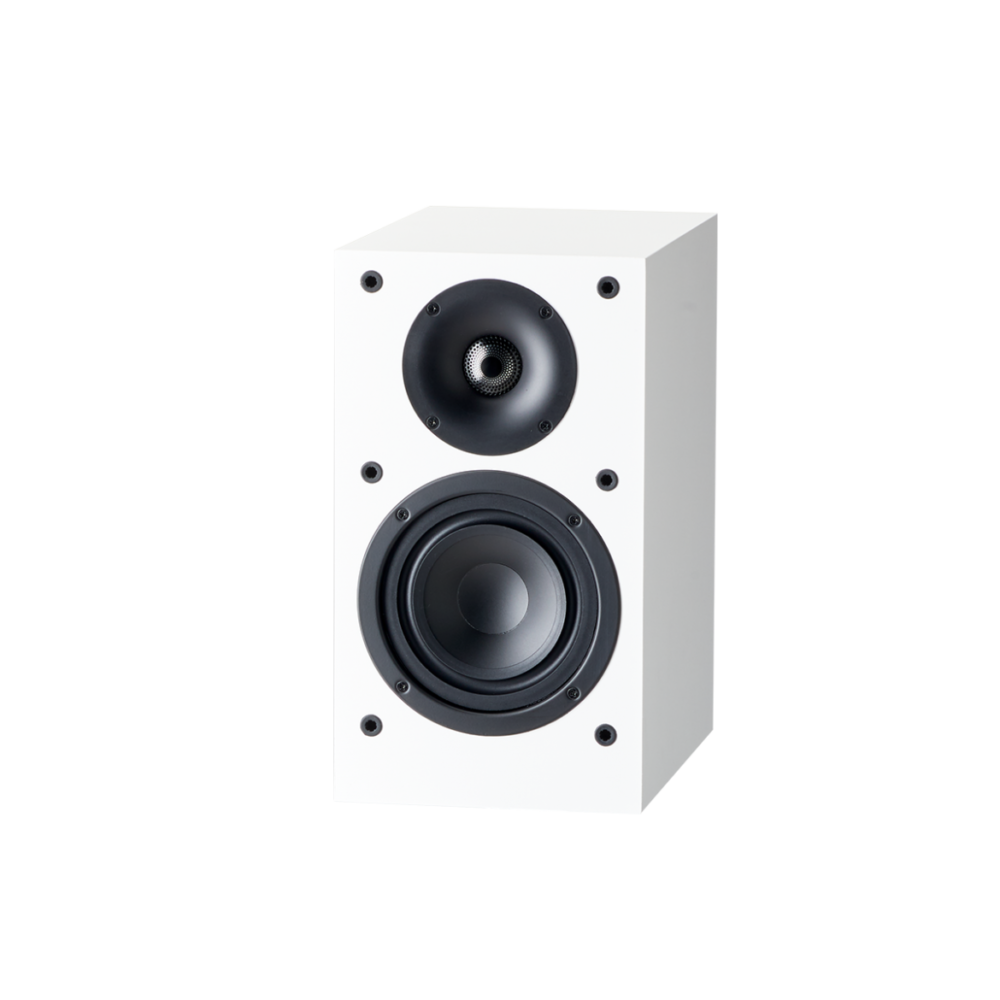
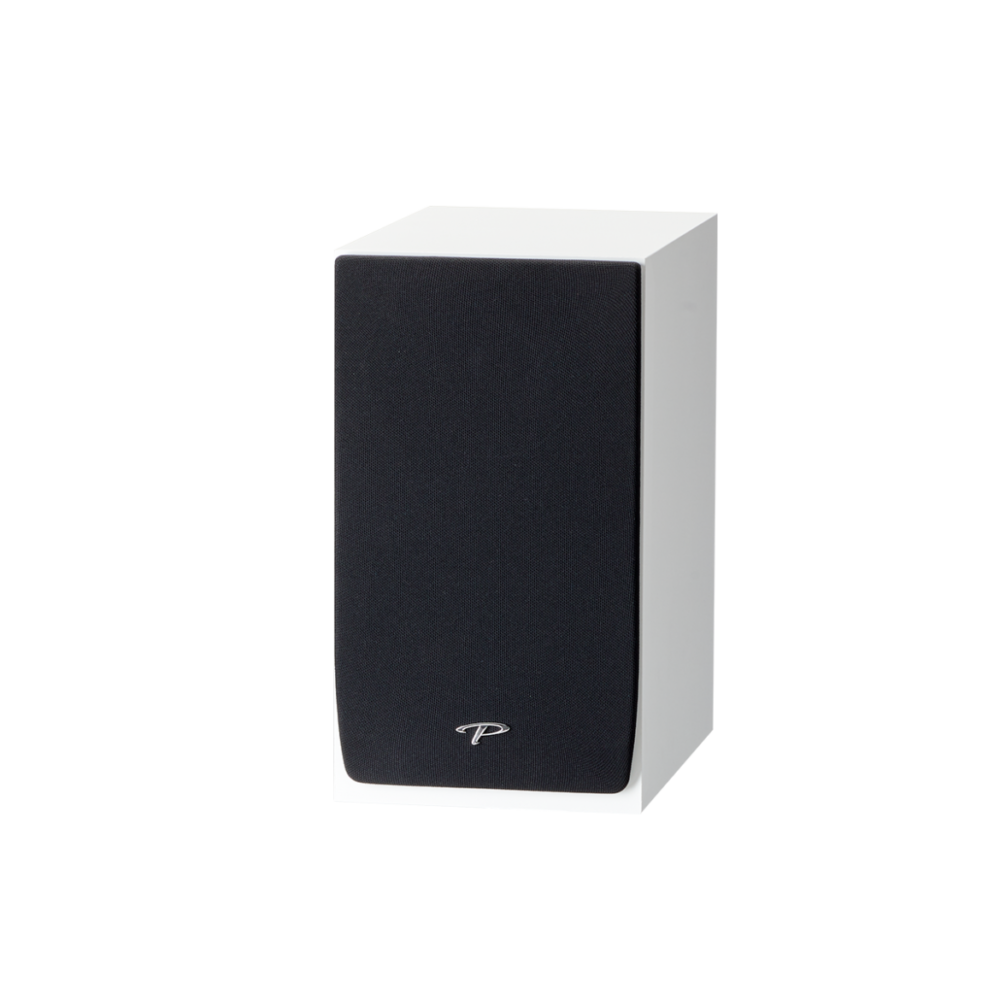
Despite their compact size, the Atom SE speakers deliver a mature sound. We tested them as front speakers, listening to Mike Oldfield’s Tubular Bells II-CD, and were surprisingly pleased with the results. While costing approximately one-third the price of the front speakers, their performance exceeds that ratio. Upgrading to a superior speaker of similar size would likely require at least doubling the cost of the Atom SE. We chose to mount them on stands (wall mounting is not recommended due to the rear port) and direct them slightly inward towards the listening position, as Paradigm recommends for all their speakers (except the subwoofer). And speaking of subwoofers…
Defiance V10 – cocky subwoofer with hypermodern app
The subwoofer series from Paradigm’s entry-level range is called Defiance V(x) and is available in 10″ and 12″ versions (larger drivers move more air, resulting in deeper bass). The X-series, the flagship model weighing 30 kg and delivering 1300W, extends up to 15″. The Defiance V10 was priced at approximately 6,500 SEK during our testing. For larger rooms, or for those seeking greater bass output, the 12″ model, costing an additional thousand SEK, is a worthwhile upgrade.
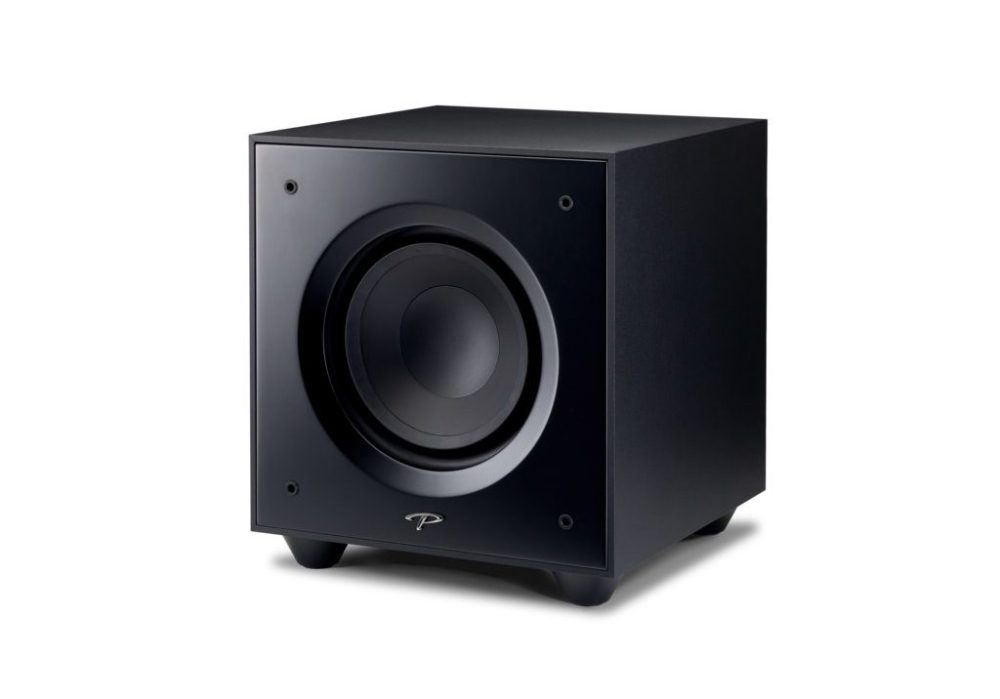
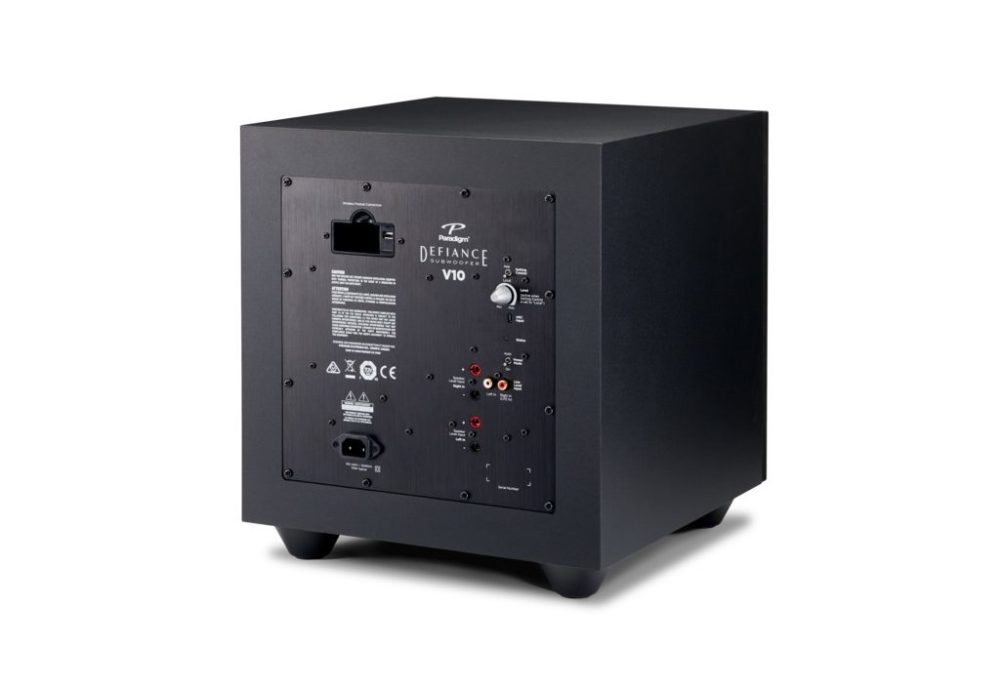
The Defiance V10 (available exclusively in black) offers a relatively stylish and compact design. It features standard inputs and controls for crossover frequency and volume. Paradigm incorporates a sophisticated app – Paradigm Subwoofer Control – for controlling the subwoofer via Bluetooth. We recommend downloading it and exploring the demo mode to understand its capabilities. While some apps can be superfluous and costly gimmicks, the Defiance app is a genuine asset. It allows precise control over all subwoofer settings (ensure the physical switch is set to “app control”), including EQ, crossover, and volume. Additionally, the free ARC (Anthem Room Correction) app enables room acoustic measurements and compensation, crucial for optimizing bass response and eliminating unwanted “boominess.”
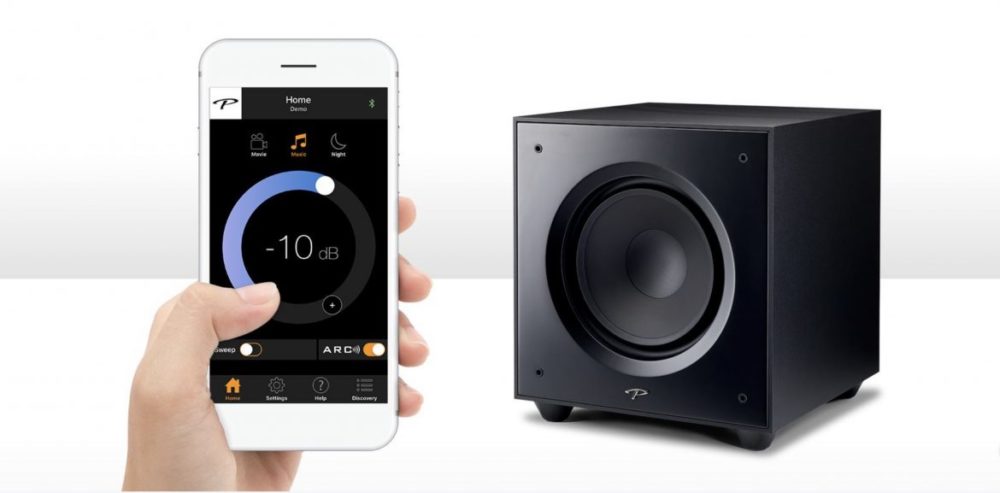
The apps are available for both Android and iOS. iPhone users benefit from the balanced built-in microphone, which can be used to take measurements from five different listening positions (yielding results comparable to Paradigm’s dedicated microphone, sold separately for enthusiasts). A wireless dongle can be purchased to make the Defiance V10 completely wireless. However, we did not test this feature to maintain cost-effectiveness and because our subwoofer was located close enough to the amplifier for a wired connection. A wired connection is generally preferred for reliability.
The Defiance V10 is a highly capable subwoofer, offering responsiveness, agility, and deep bass extension, especially considering its price range. We strongly recommend utilizing the companion apps for setup and avoiding relying solely on your amplifier’s auto-calibration, as this may result in overly conservative settings that limit the subwoofer’s potential.
x.x.2 – this is required for you to be able to play Dolby Atmos and DTS:X
The aforementioned setup provides a 5.1 configuration: five speakers with discrete channels (two front, one center, and two surround) and one LFE channel for bass (.1) via the subwoofer. However, to reproduce the newer Dolby Atmos and DTS:X audio formats, at least a 5.1.2 configuration is required. The “.2” designates a pair of speakers responsible for height information, as these newer sound formats are object-based rather than channel-focused. Extensive investment in these speakers is unnecessary, as the audio information they handle is relatively sparse. Paradigm does not offer dedicated Atmos speakers. However, any two speakers can be connected to the “front/back presence” outputs on the amplifier and positioned above the listening area (either in front or behind) or directed upwards towards the ceiling to create a “bounce” effect (known as “upfiring”). When selecting these speakers, avoid using older, mismatched models and opt for something reasonably tone-matched to the rest of the system.
For this purpose, we utilized the Ci2 speakers from Cornered Audio, a relatively affordable solution at approximately 1,800 SEK per pair. These speakers offer good sound quality and can be installed in corners, along ceiling joints, or as upfiring speakers, angled appropriately on top of the front speakers (a specific formula dictates the optimal angle).
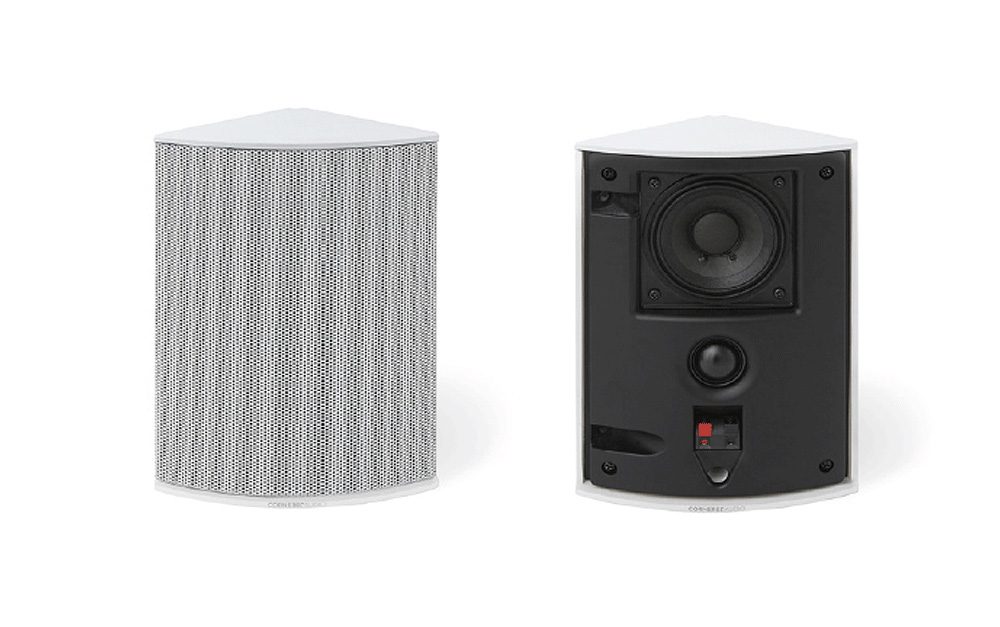
We preferred the upfiring configuration, which created the most expansive soundstage. This was particularly noticeable during rain scenes in Jurassic World – Fallen Kingdom or when immersed in the eerie choirs of Coppola’s Bram Stoker’s Dracula (UHD edition). To experience DTS:X, less common on films than Dolby Atmos, we recommend the UHD edition of Ridley Scott’s Oscar-winning Gladiator (2000). The Colosseum has never felt so immersive!
Banana contact is our tactic
Connecting speakers is straightforward but requires some careful attention. Cables must be stripped and connected to the corresponding terminals on the speakers and amplifier. While speaker connections are generally accessible, the rear of the amplifier can be cramped, increasing the risk of stray wire strands causing a short circuit with potentially damaging consequences.
Banana plugs offer a solution to this problem. These connectors are screwed onto the cable ends (at least the end connecting to the amplifier) and then easily plugged into the speaker terminals. This simplifies connections and eliminates the risk of short circuits.
A key step for beginners is removing the protective plugs (see the rightmost connector in the picture below) from each amplifier terminal. The easiest method is to bend a paper clip into a small hook and use it to extract each plug.
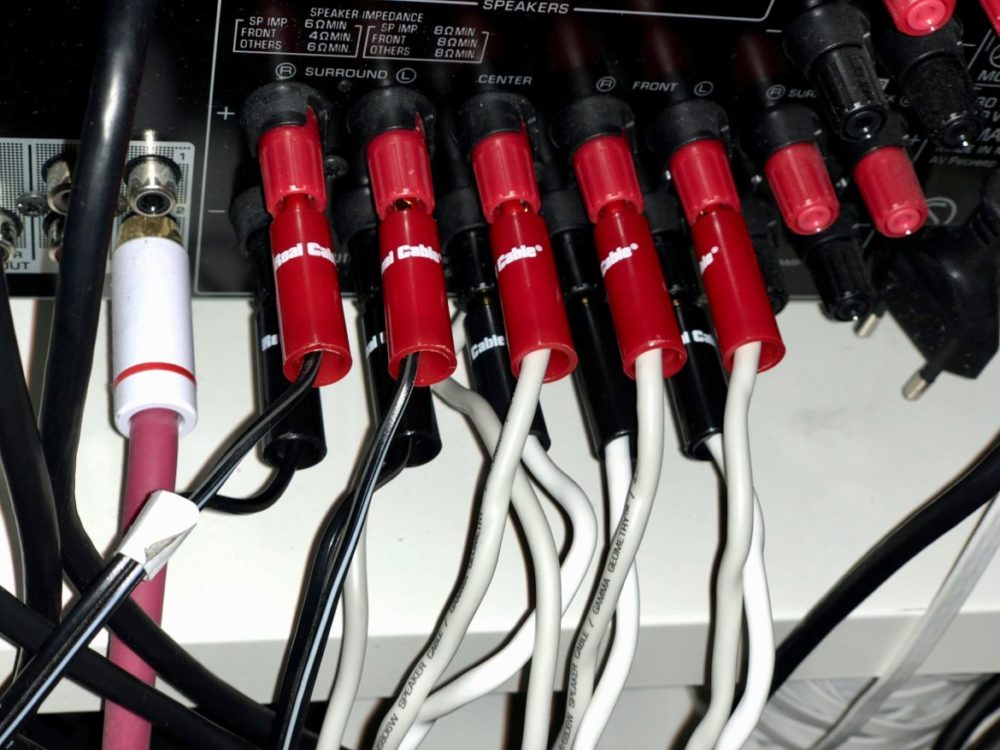
Banana plugs are available in a range of prices, with some incorporating precious metals and other enhancements. However, we found that Real Cable connectors (four pieces, two-colored, for approximately 120 SEK) perform admirably and are a cost-effective option (a 5.1.2 system requires 14 pieces, so purchase four packages and keep the extra two on hand).
Paradigm Monitor + Defiance + Cornered Audio = the overall impression
While individual speakers or speaker pairs may sound good, the ultimate test is how the entire system performs cohesively. A common shortcoming of many home theater systems is a sense of disjointedness, where the sound appears to emanate distinctly from individual speakers, detracting from the overall immersive experience.
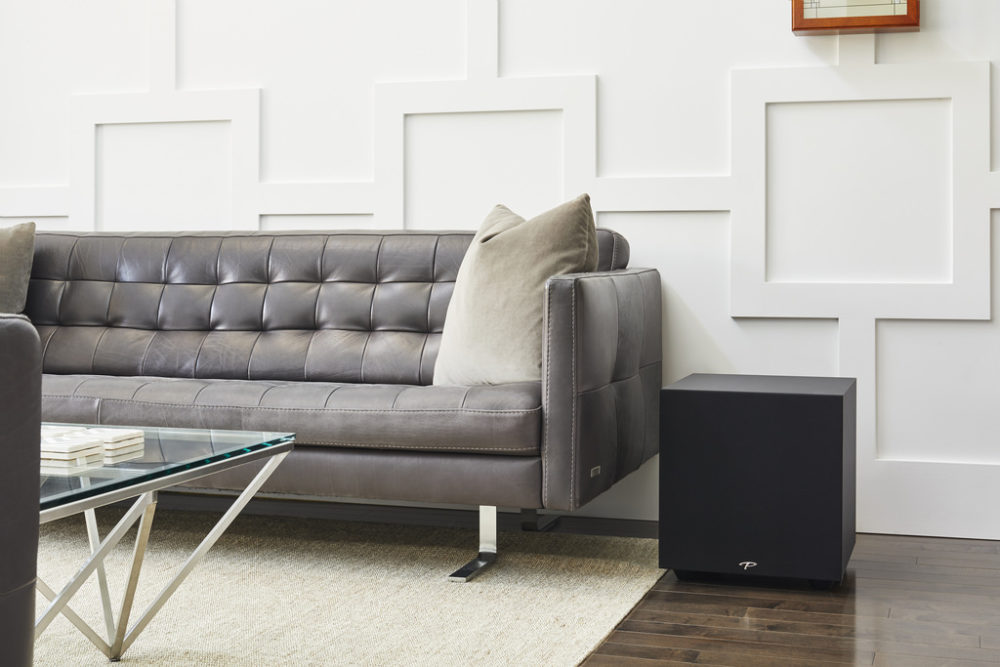
The Paradigm system performs exceptionally well, particularly after a break-in period of a couple of weeks. The soundstage is expansive, detailed, and warm, and, crucially, high-quality sound mixes transition almost seamlessly between speakers. This is also dependent on the quality of the sound mix and the power and performance of the driving amplifier. The opening scene of Deadpool 2, with its chaotic action, blood splattering across the soundstage, dynamic swordplay, Dolly Parton soundtrack, and Reynolds’ sardonic dialogue, delivers a truly immersive home theater experience. Similarly, the UHD edition of Venom (a surprisingly entertaining film) showcases scenes where Eddie (Tom Hardy) converses with Venom’s voice inside his head, demonstrating the system’s ability to seamlessly switch between Hardy’s normal voice and Venom’s deep, resonant tones.
Music reproduction is also impressive. While “purists” may prefer high-resolution audio in stereo, enabling one of Yamaha A2080’s AI modes for virtual surround processing creates a dynamic and engaging listening experience. When optimally applied, the results are captivating. Listening to Disturbed‘s rendition of Sound of Silence evokes goosebumps, with David Draiman’s vocals perfectly positioned in the front speakers and the dynamic range fully captured, complemented by a string orchestra that is almost visually perceptible.
The total cost of this package, based on list prices at the time of testing (including Cornered Audio speakers and Real Cable banana plugs), is 24,130 SEK, remaining comfortably under the 25,000 SEK threshold. For a more compact system or a reduced budget, using the Atom SE speakers as front speakers saves approximately 6,700 SEK, lowering the total cost to 17,430 SEK, a very affordable price.
While not inexpensive, the system offers exceptional value for money. Previously, we utilized reference systems from Tangent (Prestige, now discontinued) with subwoofers from REL. This 5.1 system cost more than twice as much and did not provide a significantly improved listening experience. The comparison is somewhat skewed by advancements in high-resolution audio and amplifier technology, but it highlights the improved performance and affordability of current technology.
Pairing the Paradigm system with an amplifier in the 10,000-15,000 SEK range creates a home theater setup that rivals the sound quality of many local cinemas. In an era where interest in dedicated home theater systems may be waning due to shrinking living spaces and acceptance of “good enough” sound from soundbars, this system caters to discerning listeners who prioritize audio quality, which constitutes a significant 70% of the film and gaming experience (in contrast to the emphasis on larger displays, which have seen increasing adoption, now representing over 90% of the focus).
Few disadvantages with Paradigm Monitor and Atom
Given its price point, the entry-level Paradigm system has few significant drawbacks. Superior speakers exist, offering clearer treble, more pronounced overtones, and deeper bass extension (though the Defiance subwoofer compensates significantly). However, these are analogous to a BMW i8 compared to a Skoda Octavia. While the former offers advantages, the Paradigm system is a well-rounded and capable option for its price. Even when powered by a slightly less powerful, entry-level surround amplifier (around 5,000-7,000 SEK), it delivers an engaging and enjoyable experience despite modest D-class amplification and limited power reserves.
